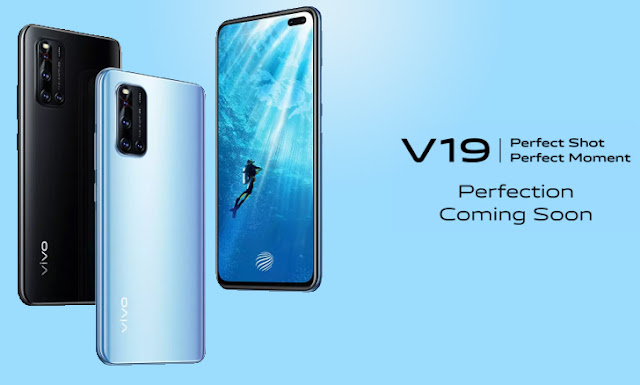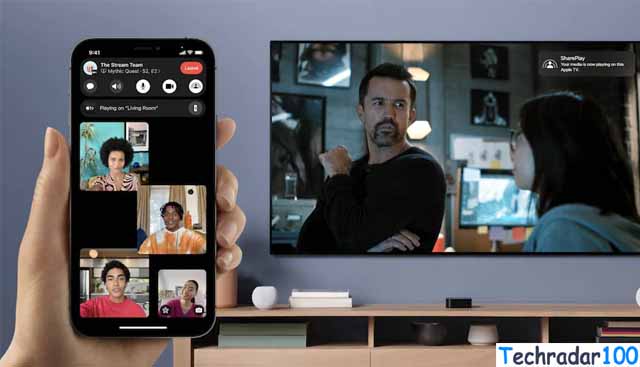Vivo V19 Rs. 27,990 in India
Vivo is continuously introducing new smartphone models in
several series in India to expand its portfolio. In the past year, we've added
Vivo Z series, U series and X series, targeting online phone buyers. However,
Vivo's oldest series, the Camera-Focused V Series, has not been forgotten. The
company has added the series with the new Vivo V19. As its name suggests, it is
the successor of the Vivo V17, but its price is slightly higher.
Rs. The 27,990, V19 packs a Snapdragon 712 SoC, which is
cheaper than many other smartphones in the same price range. Can this model
make it in other areas? We reviewed it to find out.
Vivo V19 design
The Vivo V17 Pro is the first smartphone to feature a dual
camera pop-up module for selfies, and the Vivo V19 Dual Camera is the first
smartphone to play the hole-punch setup. The front cameras are in the upper
right corner of the display. The phone is long and you can't hold it in one
hand and reach the top of the display.
The power and volume buttons are mounted on the right side
of the Vivo device and they are easy to access. There is only a sim tray on the
left. The frame of the Vivo V19 looks like plastic. At the bottom, there is a
USB Type-C port with basic microphone, 3.5mm headphone jack and loudspeaker
grille. At the top, it's only a secondary microphone.
We found that the Vivo V19 was a bit thicker. The back of
the phone is made of Corning Gorilla Glass 6, which should handle daylight
well. The Vivo has curved sides that can easily hold the V19. The Vivo V19
comes in two finishes, Mystic Silver and Piano Black. We have the Mystic Silver
Unit for this review. We found the back panel to be a fingerprint magnet
because it takes the smoothies very easily. Vivo carries a transparent case in
the box and we recommend that you use it with this device.
The Vivo V19 weighs 186.5 grams and packs a 4,500 mAh
battery. The Vivo Box also includes a 33W fast charger.
Vivo V19 Specification and Software
The Vivo V19 features a 6.44-inch AMOLED display with
full-HD + resolution. Even in the open air, the display looks crisp and bright.
You can adjust the color temperature with the display color mode.
Powering the Vivo V19 is the Qualcomm Snapdragon 712 SoC,
which raises some eyebrows. This processor usually costs Rs. We were surprised
to see the 15,000 and Vivo V19 used it. The Snapdragon 712 is an octa-core chip
based on a 10nm process. It clocked six Cryo 360 Silver cores at 1.7GHz and two
high-performance cores at 2.3GHz. It has an Adreno 616 GPU for graphics. Vivo
says Copper Tube used liquid cooling for the Vivo V19 to keep the thermo on.
The Vivo V19 has 8GB of RAM and comes in 128GB and 256GB
storage options. The base variant is priced at Rs. 27,990 while the higher
version costs Rs. 31,990 in India Rs. We have a 256GB version for this review.
Connectivity options for the Vivo V19 include Bluetooth 5,
dual-band Wi-Fi, four satellite navigation systems and 4G as well as Vote. It
has no NFC connectivity and no FM radio.
On the software front, the Vivo V19 runs FinTech OS 10 on
Android 10, and our unit runs the April Security Patch. This is the latest
version of the FunTouch OS and is a big improvement over the previous one,
which finally fixes the quick toggle problem we mentioned, now you have to
swipe from bottom to top to access the quick toggle on the device; You can
swipe down from the notification shadow to access them. This is standard with
most Android smartphones, but Vivo has previously used an iOS-style swipe,
which is confusing. We are happy that this has changed.
There is no app drawer and all the app icons are available
directly on the home screen. Swiping right from the home screen will take you
to the Smart Launcher shortcut. You get many customization options on Vivo v19.
You can change the traditional three-button navigation layout for swipe-based
gesture navigation. You can also change the animations for charging,
fingerprint and face recognition, and standby / wake. It also provides digital
wellbeing and parental control.
Vivo V19 comes with pre-installed blurware. Apps on the device
include Halo, DailyHunt, Opera, Amazon Shopping, Flipkart and Facebook. Some of
these apps have the ability to generate spam notifications when launched, so we
recommend you uninstall the ones you don't use. The Vivo V19 also has a
motorbike mode, which can reject a phone call and send the message to the
caller automatically.
Vivo V19 performance and battery life
The Vivo V19 provides reasonable performance and we never
lag or stutter when using a smartphone. Multi-tasking has become a breeze with
8GB of RAM. We can switch between different apps and rarely wait for the device
to reload the entire app.
In Vivo V19 we have implemented some benchmarks to see how
low it is compared to other smartphones in its price segment. In Geekbench 5's
single-core and multi-core tests, the Vivo V19 scored 416 and 1,596
respectively. In PCMark Work 2.0 it was able to score 6,983 points. That's less
than the score of the RealMe X2 Pro and 29,999 phones, which scored 12,226 on
PC Mark Work 2.0. The Vivo V19 achieved 13fps and 24fps on GFXBench's Car Chase
and Manhattan 3.1 graphics tests, respectively.
We played PUBG Mobile on Vivo V19 and it reached high
settings by default. The frame rate is high and the graphics are set to HD. We
played a few rounds and noticed no gaps despite the occasional stuttering. We
played a round for 15 minutes and saw a 4 percent battery drop, which made us
feel good. The phone became a little warm to the touch, but nothing dangerous.
The Vivo V19 packs a 4,500 mAh battery and gives good battery
life. The Snapdragon 712 SoC is not very powerful but it works effectively. We
were able to use the battery for one and a half days in the charging cycle.
Even in our HD video loop test, the V19 was able to clock 18 hours and 30
minutes, which is a good score. Charging was quick, and the phone was able to
charge 44 percent in 30 minutes and 83 percent in one hour.
Vivo v19 camera
Like every other smartphone launched in 2020, the V19 has a
quad-camera setup on the back. It has a 48-megapixel primary camera with f /
1.79 aperture, 8-megapixel wide-angle camera with f / 2.2 aperture, 2-megapixel
macro camera and 2-megapixel depth sensor. Next to the sensor is a dual LED
flash. The front of the phone has a 32-megapixel primary camera and an
8-megapixel ultra-wide-angle secondary shooter.
The camera app hasn’t changed much and it is similar to what
we’ve seen in vivo phones in the past. In addition to the usual photo and video
modes, it includes Knight, Portrait, Jovi Vision and 48 megapixel modes. It has
buttons to switch between different cameras on the device.
The Vivo V19 is quickly focused and the AI can detect what
we are shooting. In broad daylight, the Vivo V19 handles a good shot with
enough detail. Objects appear at zoom distance. There are no details on the
shots taken with the wide-angle camera. The resulting image has a wider area
but barrel distortion.
Closeups are also good, and the device maintains a natural
looking depth between subject and background. You can also switch to bokeh
mode, which allows you to set the blur level before taking a shot. We have
found that photos shot in this genre are hit-or-miss and look somewhat
artificial. The macro camera allows you to super-up a thing, but the output is
limited to 2-megapixels.
You can also shoot at full 48 megapixel resolution,
resulting in very large files. The final output allows you to zoom in a lot but
the details aren't great. We also noticed some artifacts when zooming. Regular
photos have a better dynamic range, as the V19 also applies HDR if the sensor
does not use full resolution.
Portrait mode adds beautification and gives you the
opportunity to adjust or disable it before taking a shot. We liked to turn it
off because the default settings make the skin tone a bit softer. You have to
select Bokeh in the lens settings as the phone does not add this effect by
default. However, it allows you to choose the blur level before taking the
shot. We found that daylight had a good edge.
V19 is the default beauty for selfies in V19. It may
represent different postures. In a favorable light, the Vivo V19 can give some
nice selfies that are sharp and detailed even after zooming. The Wide Angle
Front Camera does not provide the same details as the primary sensor. There was
a significant decrease in photo quality, and the shots did not look crisp. We
also noticed a slight color temperature change in some of the photos. There are
wide-angle improvements to the battle-blocking area. The Ura Raw Light feature
makes the entire screen white with oval cutouts for your face. Vivo told
Gadgets360 that it helps you preview the shot before it is shot and also helps
improve selfie in low-light conditions.
4K tops for basic selfie camera and video recording for main
selfie shooter. The footage shot was fixed at 1080p but not 4K video. There is
also an ultra-stable mode, which uses the primary camera and harvests the frame
to stabilize the footage even in low light. It also comes with a front camera,
but it also doesn't work. Low-light video has good quality but has a shiny
effect.
Decision
The Vivo V19 doesn't have a very powerful processor,
considering its asking price, and it could be a deal breaker for prospective
buyers. The Snapdragon 712 SoC is nowhere near as fast, but if we look beyond
that, the Vivo V19 packs in good cameras and a large battery. The display is
clear and the fingerprint scanner on the display is quick.
Its price is Rs. 27,990, the base variant is priced at Rs.
31,990 for the higher version, the Vivo V19 looks great compared to other
phones in this segment. The Realme X2 Pro is priced at Rs. The 2,000-plus, more
powerful Qualcomm Snapdragon offers 855+ SoC and claims 50W fast charging. All
that the Vivo V19 has done for it is its selfie camera. The primary sensor
maintains good selfies and the aura lighting feature works in low light. In
addition, Vivo's offline presence makes it easy to buy this phone from a nearby
store.











No comments:
Post a Comment